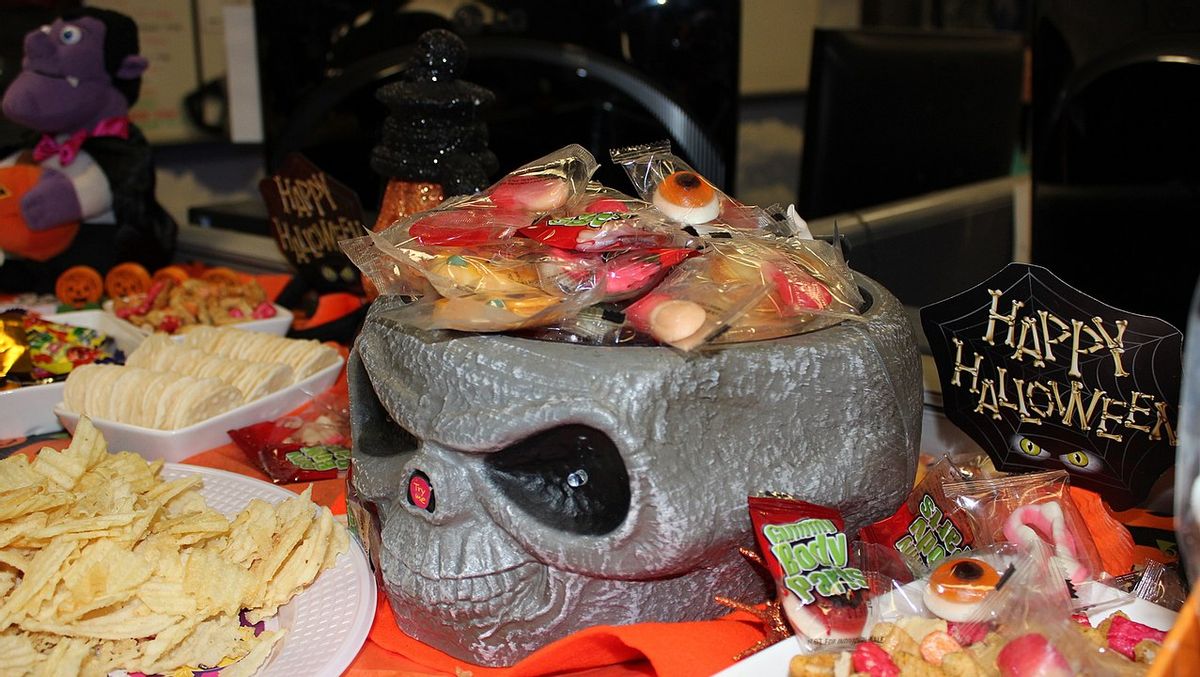Scary stories on the internet are popular around Halloween season, but some in particular feed off of our very real-world fears. In late September 2022, we covered the trend of “rainbow fentanyl” in Halloween candy, and while there were some cases of candy tampering, most of the fears were overblown as these stories spread on the internet.
The “Bad Candy” phenomenon is an example of “scarelore,” a version of urban legends or fictional tales intended to frighten audiences, often prompting them to share without questioning the story. In the 2005 report “Email forwardables: Folklore in the age of the Internet,” by Marjorie Kibby, a researcher with the University of Newcastle defined scarelore as “dire warnings that reflect the fears and obsessions of contemporary society.”
Kibby shared a number of popular, forwardable email examples from that time that intended to scare people, such as food-contamination scares and more:
- If you flash your headlights at a car driving without its lights on you will be shot as part of a gang initiation rite;
- If you try to retrieve your coins from a payphone you will be pricked by an HIV-infected hypodermic;
- Shampooing your hair or using anti-perspirant will give you cancer;
- Waterproof sunscreen will cause blindness in children;
- Your social security number contains secret racial identifiers;
- Dialing 90# will give a third party access to free phone calls at your expense;
- Artificial sweeteners will kill you; and
- If you relax your guard for a moment someone will steal one of your kidneys.
A more recent viral example of scarelore from 2018 and 2019 was the story of zip ties being left on cars, around homes, and mailboxes to mark potential female victims for human trafficking. These fears turned out to be unfounded.
In a June 2022 news report from North Carolina, a local police department said a viral social media post reporting sex trafficking in the town of Holly Springs was just “scarelore.” The department even shared the post on this Facebook page, which appeared to claim a 26-year-old women was targeted by a sex-trafficking ring after finding a red zip tie on her car. The police department said in response:
The Holly Springs Police Department has received several inquiries regarding the below social media post that has been circulating regarding sex trafficking and the targeting of young women’s vehicles. The police department has verified there has NOT been an incident of this nature in town. This appears to be an urban legend, or “scare-lore”. Different variations of this story have been circulating for some time and have been addressed by other police departments across the country and proven false.
Other debunked examples of scarelore include how rubber bands on door knobs are not a sign of impending burglary; abandoned car seats are not a sign of sex trafficking; strips of blue tape laced with fentanyl are not being placed on random cars; and how “hair-cut-and-dye job” kidnappers stories from the 1990s were often incorrect.
Scarelore is basically another way to describe an urban legend, which Merriam-Webster defined as “an often lurid story or anecdote that is based on hearsay and widely circulated as true.”
How can you tell if a post is scarelore? We’ve identified some common threads in such posts:
- The “barely escaped from the clutches of evil” trope is very common and effective. This usually involves a vivid, first-person account of a terrifying incident, and is often used in social media claims about child abductions, which we covered in some detail here.
- The source of the story is not apparent. Usually it is someone claiming to share someone else’s experience, and copy-pasting it from a totally unrelated person’s account.
- They feed on very prevalent fears, which include the world being threatening to children or women, are often alarmist in tone, and come with safety tips and advice.
- In some cases, scarelore is intended to push political and xenophobic buttons, and links anecdotes to wider issues of immigration, “terrorism,” and more.
- They describe specific patterns of behavior from offending groups, like traffickers and their use of zip ties, or kidnappers who regularly give their victims haircuts and dye jobs to conceal them.
How can you avoid falling for such false information? We have many resources on identifying the veracity of social media posts, which you can read about here and here.
Instead of relying on social media to pinpoint trafficking or kidnapping incidents, there is plenty of advice available from more reliable sources, like this U.S. Department of Health and Human Services guide for health practitioners on “Identifying and Interacting with Victims of Human Trafficking,” or similar resources from the Vera Institute of Justice.
